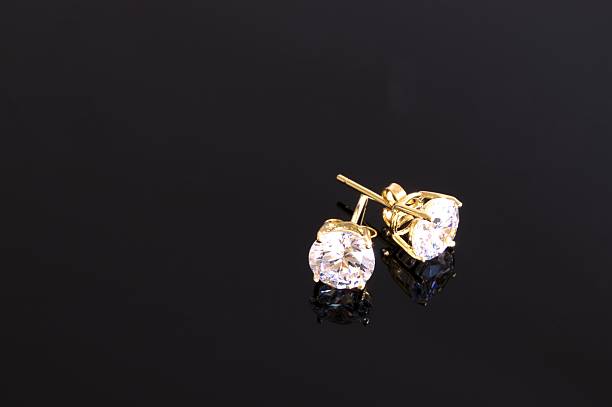What to Look for in Colored Diamonds All Entries

Color is one of the five main factors that determines diamond prices. The more pure and colorless a diamond is, the higher value it will command. The best way to make sure you're getting the most value for your diamond is to visit a GIA-certified gemologist. Here are details on what to look for in terms of pure or colored diamonds.
Why Diamond Color Matters
Diamonds span a range of colors, but it's important to understand the difference between a white and a fancy-color diamond. White diamonds come in various shades, as the least valuable stones have shades of yellow and brown. Non-white diamonds that take on more colorful appearances, such as pink and blue, are graded on a separate scale.
Be aware that just looking at a white diamond will not give you the best indication of its color, since appearances may vary under different types of light. Certain types of bright lights can make a diamond appear to sparkle and look more valuable than it is.
That's why it's best to see an experienced gemologist to get a fair value estimate for a diamond price. The Gemology Institute of America (GIA) uses a scale of letters D through Z to grade white diamond color. This scale has been used since the 1950s. D represents pure clarity and the most value, while Z indicates yellow or brown color and the lowest value.
While it can be difficult for the common person to tell the difference between D though F grades, it's somewhat obvious when comparing D with Z grades. In other words, a Z grade diamond usually has an obvious yellow or brown tint. By contrast, a diamond rated from D through J won't display any yellow.
Factors Affecting Color
Once a diamond is installed in a ring, it becomes more difficult to detect its color. Once again, lighting conditions can alter color appearance, in which an H grade may resemble a D grade. Another factor that affects appearance is the mounting. White or platinum mountings, for example, can make the yellow in a diamond more obvious.
A seasoned gemologist compares diamonds side-by-side to assess color under controlled lighting. As carat weight increases, color becomes a more significant element that contributes to diamond value. In other words, the larger a diamond is, the easier it is to determine its color grade.
Although other diamond color grading systems have existed for centuries based on numberical grades, the GIA system is the most widely respected. In fact, it's considered the universal method.
Colored diamonds outside the D-Z system are known as "fancy-color" diamonds. According to the GIA, the FTC does not provide guidelines for use of this term in the United States. The international jewelry trading community, however, generally agrees that fancy-color diamonds are more colorful than yellow or brown Z grade white diamonds.
Conclusion
In your hunt for diamonds that hold and deliver value over time, make sure you understand how color is measured by GIA standards. Colorless diamonds are the most valuable because they are the most rare. Contact Ralph Mueller & Associates for more information on getting the best deals for colored diamonds or other jewelry.